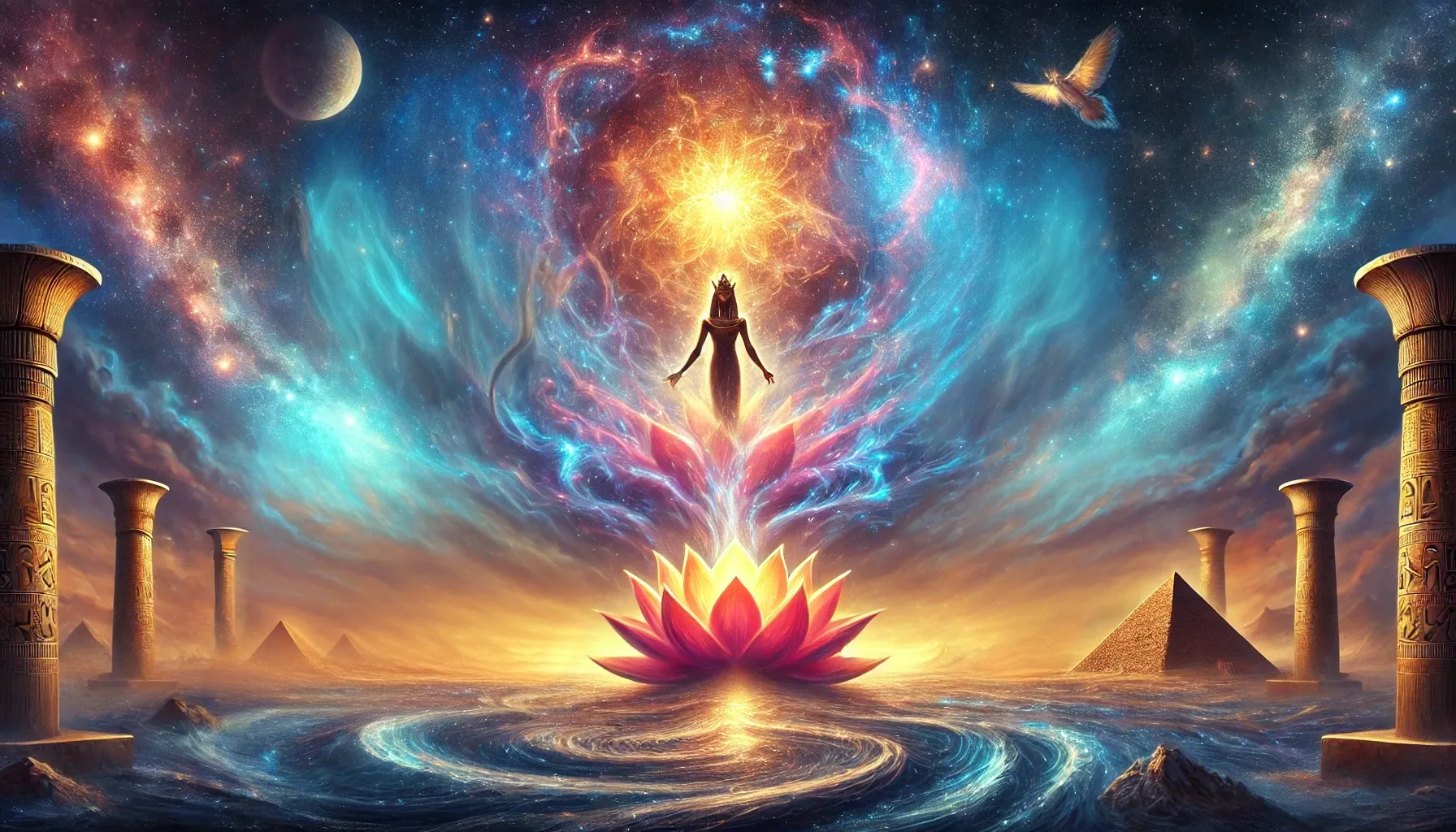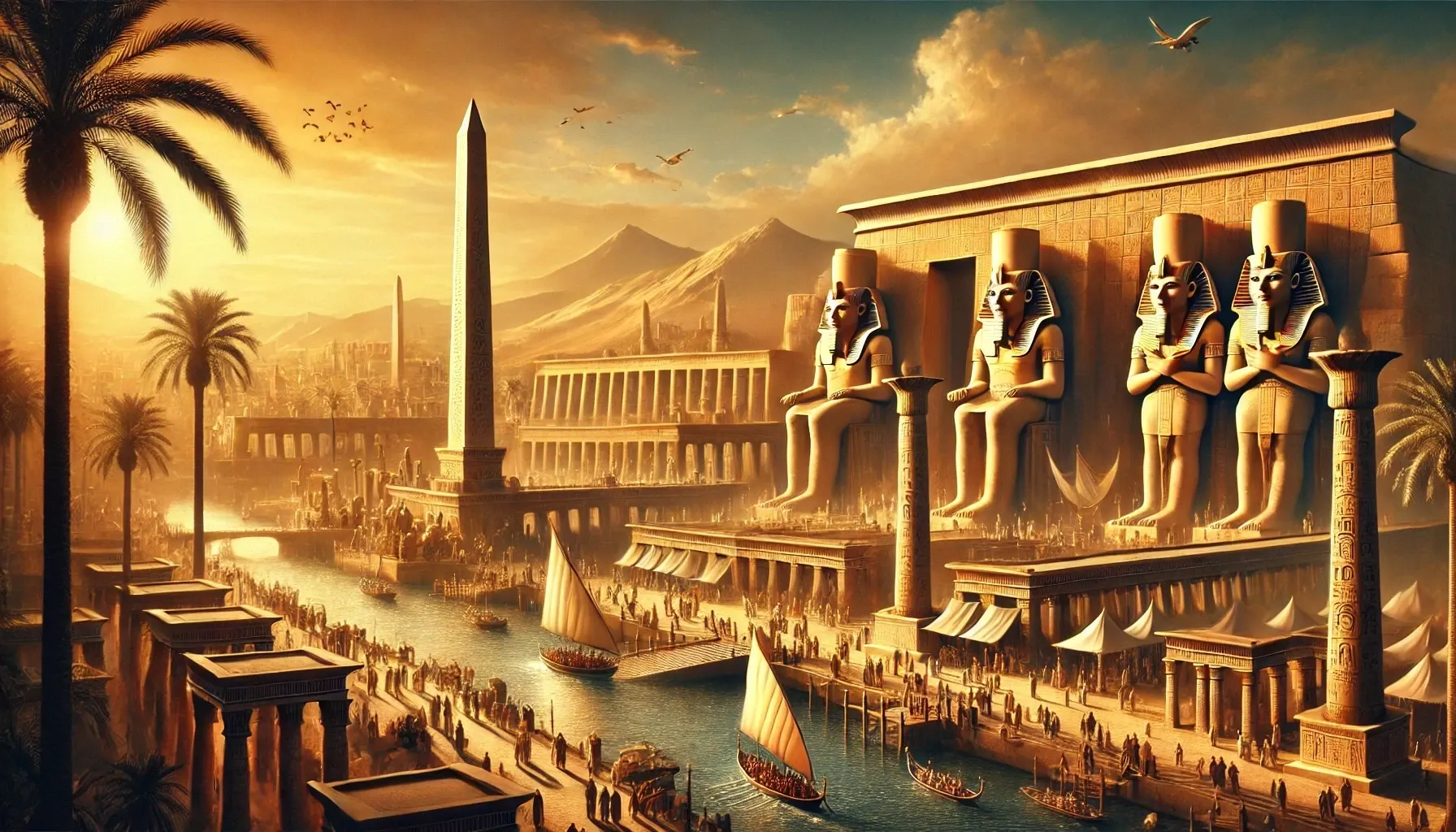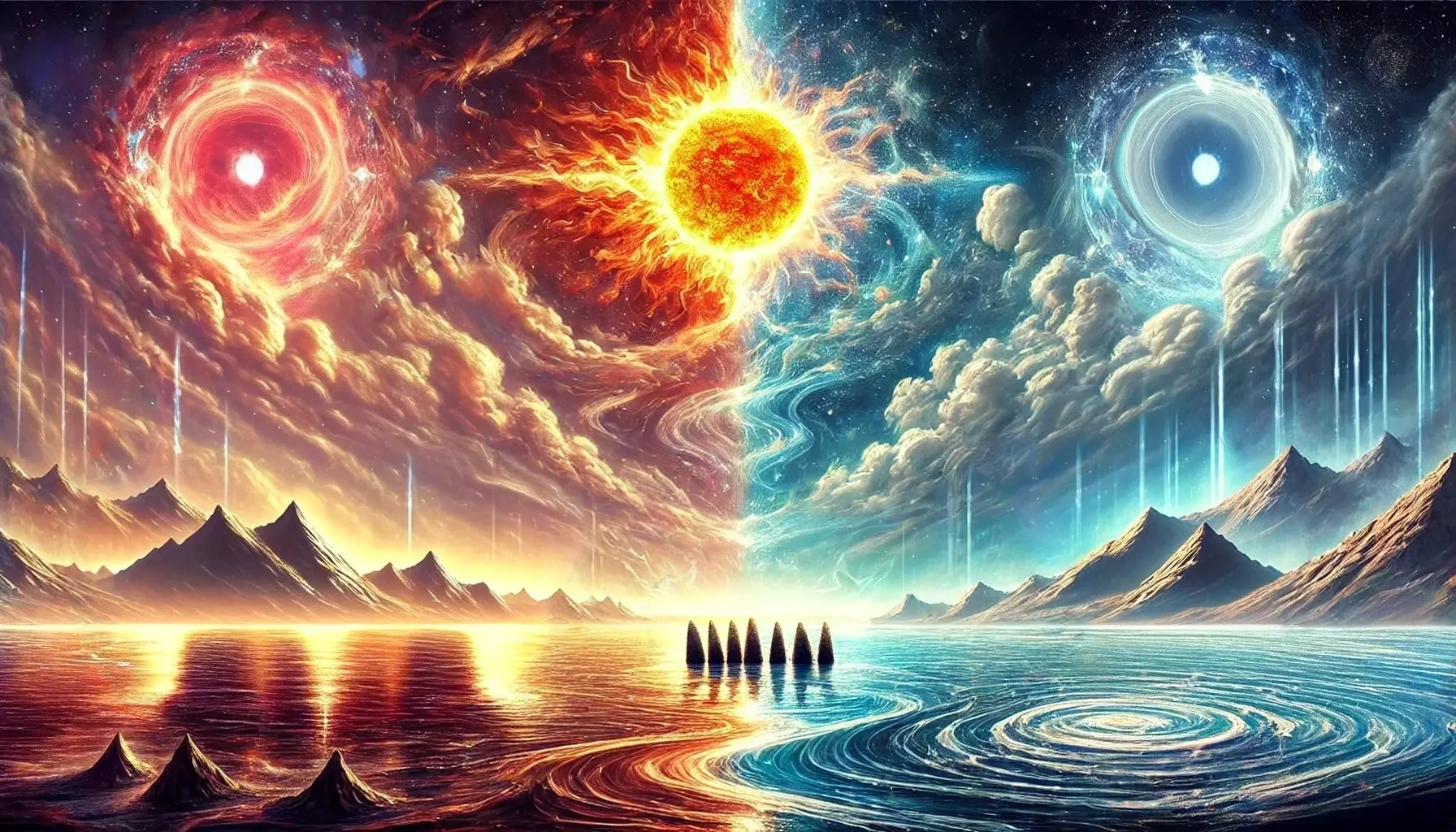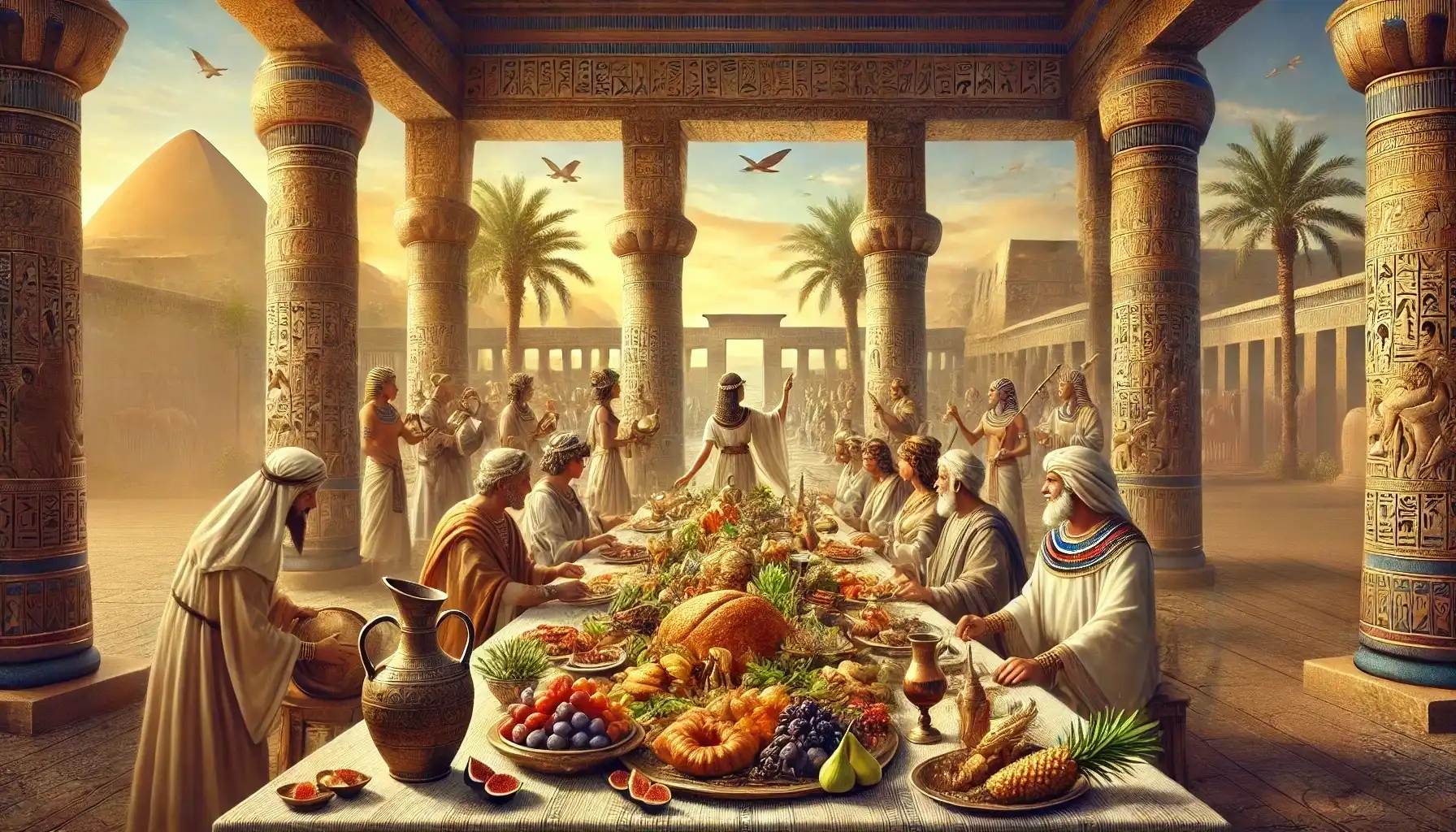The Egyptian civilization, with its rich tapestry of mythology and culture, offers a fascinating glimpse into the origins of life and the universe. At the heart of this ancient belief system are the Egyptian creation myths, each unique yet interconnected, reflecting the diverse perspectives of the regions where they originated. Let’s explore the most prominent creation myths: The Heliopolitan Creation Myth, the Memphite Creation Myth, the Theban Creation Myth, and the Ogdoad Creation Myth.

1. The Heliopolitan Ennead Creation Myth
Origin and Overview
Centered in Heliopolis (modern-day Cairo), the Heliopolitan Ennead is one of the oldest and most influential creation myths. This myth introduces a group of nine gods, collectively known as the Ennead, led by Atum, the self-created deity.
The Story
Atum emerged from the chaotic, primordial waters of Nun. He created Shu (air) and Tefnut (moisture) by spitting or sneezing them out. These two deities birthed Geb (earth) and Nut (sky), who in turn gave life to Osiris, Isis, Seth, and Nephthys. Together, these nine deities shaped the natural world and established the cosmic order.
Symbolism
The Ennead represents the interconnectedness of natural elements, familial bonds, and the duality of order and chaos. Atum’s self-creation symbolizes the potential for life and growth even amidst disorder.

2. The Memphite Creation Myth
Origin and Overview
This myth hails from the ancient city of Memphis, where Ptah, the god of craftsmanship and creation, was revered. The Memphite Theology is preserved on the Shabaka Stone, an ancient artifact inscribed with this cosmogony.
The Story
In this narrative, Ptah creates the universe through thought and speech. By conceiving the world in his heart and uttering it with his tongue, Ptah brings all things into existence, including other gods, humans, and the physical realm.
Symbolism
The Memphite myth emphasizes the power of intellect and language. Ptah’s role highlights the importance of thought, creativity, and communication in shaping reality.

3. The Theban Creation Myth
Origin and Overview
The Theban myth focuses on Amun, the hidden and mysterious god who rose to prominence during the New Kingdom period. This creation myth underscores Amun’s supremacy as the creator of all.
The Story
Amun, described as a self-generated and all-encompassing deity, creates the universe through his will. He manifests life and order, positioning himself as the king of gods and humans alike.
Symbolism
This cosmogony reflects the political and religious dominance of Thebes, elevating Amun to a position of ultimate authority. It also conveys the idea of unseen yet omnipresent creative power.

4. The Ogdoad Creation Myth
Origin and Overview
From Hermopolis comes the Ogdoad, a group of eight primordial deities who represent the chaotic forces of the pre-creation universe. These gods are paired male and female, embodying balance and duality.
The Story
The Ogdoad comprises Nun and Naunet (water), Heh and Hauhet (infinity), Kek and Kauket (darkness), and Amun and Amaunet (hiddenness). These deities collaborated to birth a cosmic egg or a lotus flower from which the sun god, Ra, emerged, marking the beginning of creation.
Symbolism
This myth highlights the balance of opposites and the emergence of light and order from darkness and chaos. The Ogdoad’s cooperation symbolizes the harmony needed for creation.
Comparing the Myths
While each myth originates from a distinct region and emphasizes different deities and processes, they all share common themes:
- Primordial Chaos: All myths begin with a state of disorder, represented by Nun or similar entities.
- Self-Creation: Deities like Atum and Amun arise independently, symbolizing the potential for life within chaos.
- Order from Chaos: The myths underscore the establishment of Ma’at (cosmic order) from Isfet (chaos).
- Divine Authority: Each creation myth reinforces the supremacy of certain gods, reflecting the political and religious hierarchies of their respective regions.
Why Egyptian Creation Myths Matter
These myths are more than ancient stories; they are windows into the worldview of the Egyptian people. They reveal how this civilization understood the cosmos, human existence, and the divine.
Explore More Egyptian Myths
The creation myths are just the beginning. Delve deeper into Egyptian mythology to uncover tales of gods, monsters, and heroes that have shaped history and inspired cultures worldwide. Subscribe to our blog for more fascinating insights into ancient myths and their lasting legacies.



